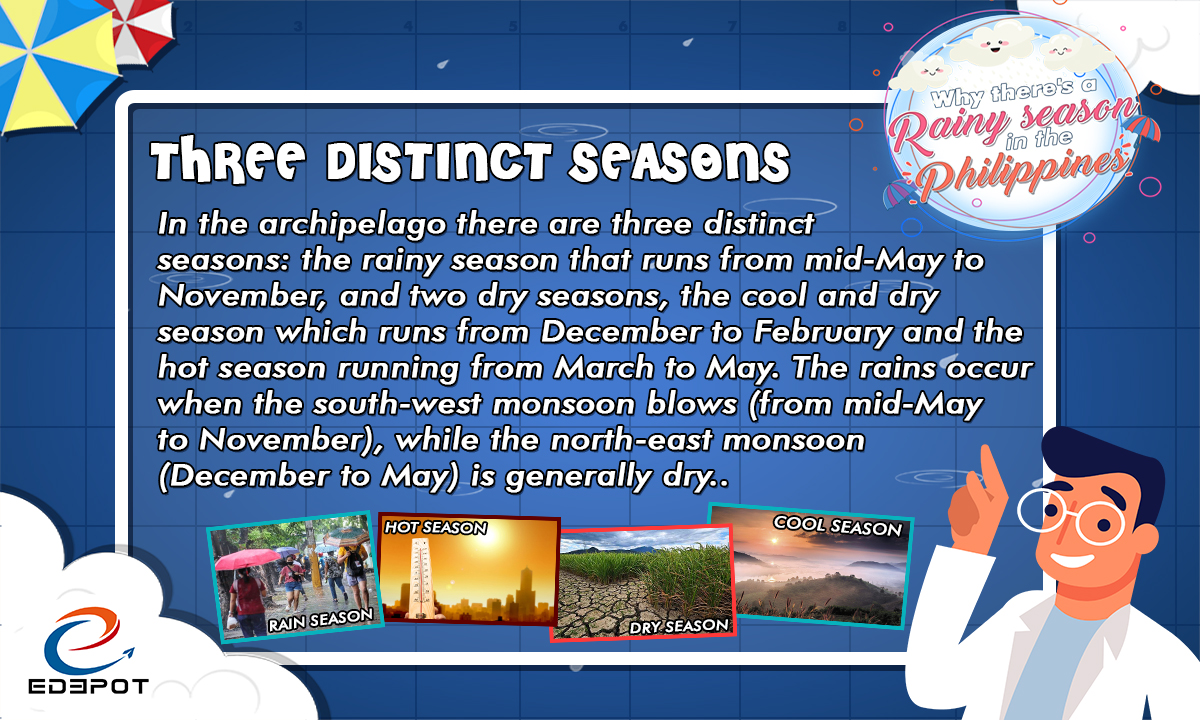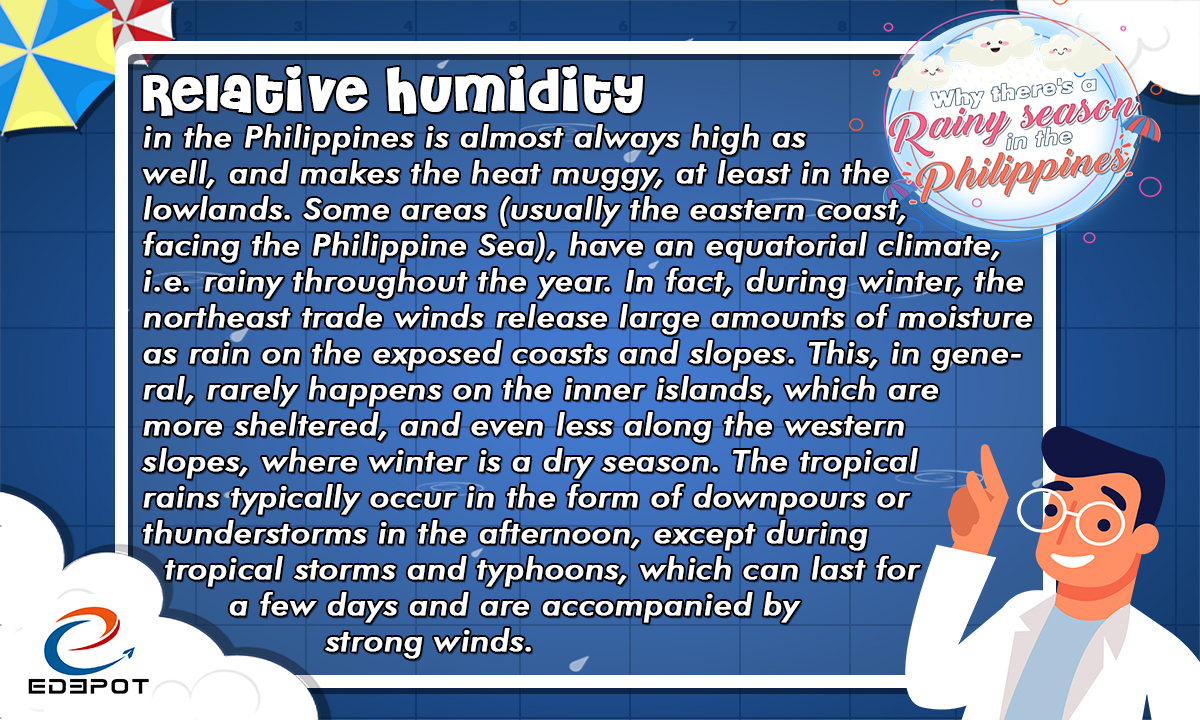Why there’s a rainy season in the Philippines


The Philippines islands have a hot and humid tropical climate, tempered by the breath of constant sea breezes. As in all areas near the equator, since the Philippines is the one With the onset of the rainy season, intermittent or occasional rain from the southwest monsoon or hanging habagat.

THREE DISTINCT SEASONS
In the archipelago there are three distinct seasons: the rainy season that runs from mid-May to November, and two dry seasons, the cool and dry season which runs from December to February and the hot season running from March to May. The rains occur when the south-west monsoon blows (from mid-May to November), while the north-east monsoon (December to May) is generally dry.

Relative humidity in the Philippines is almost always high as well, and makes the heat muggy, at least in the lowlands.
Some areas (usually the eastern coast, facing the Philippine Sea), have an equatorial climate, i.e. rainy throughout the year. In fact, during winter, the northeast trade winds release large amounts of moisture as rain on the exposed coasts and slopes. This, in general, rarely happens on the inner islands, which are more sheltered, and even less along the western slopes, where winter is a dry season.
The tropical rains typically occur in the form of downpours or thunderstorms in the afternoon, except during tropical storms and typhoons, which can last for a few days and are accompanied by strong winds.

